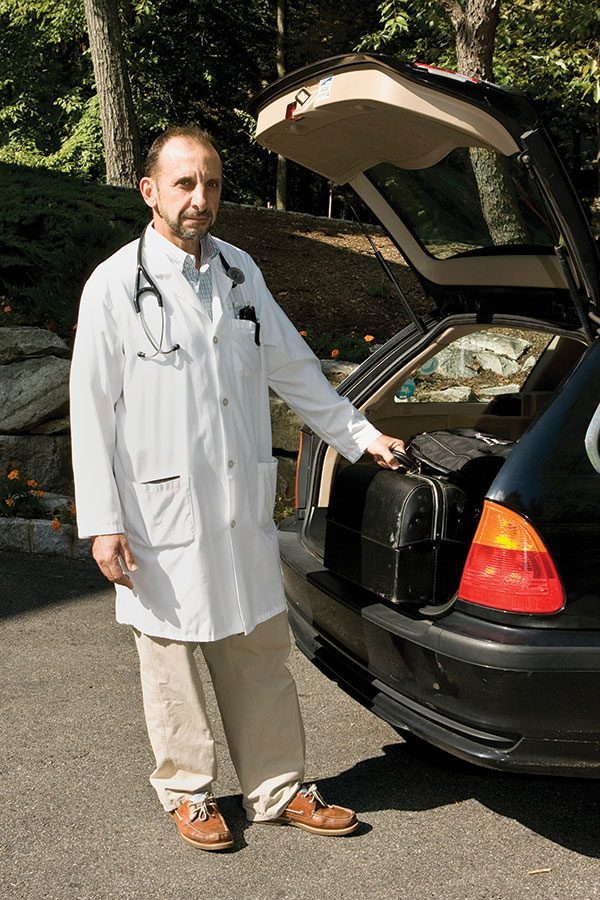
One of these days, Dr. Kenneth Cartaxo is hoping to add a different type of jumper cables to his car trunk. It’s crowded back there, but he should be able to fit a portable heart defibrillator (which directs electrical energy to a struggling heart) amid the IV pole and fluid bags, suture and catheter kits, antibiotics, urinalysis and pregnancy tests, stethoscope, credit-card machine, and other items that would puzzle a passerby.
Cartaxo’s job as a house-call doctor combines a nostalgic concept of the family physician with a large dose of modern technology. (Fear not: Amid his collection sits a familiar black leather bag, à la Marcus Welby.) The 54-year-old Kinnelon resident joined with Dr. John Hallenbeck, 43, of Montvale, to start Urgent Care House Calls (urgentcarehousecalls.net) in January, three months after Pascack Valley Hospital in Westwood, where they were emergency-room doctors, closed.
In the months since, the two have been visiting patients, mostly in Bergen, Morris, and Passaic counties. “It’s a nice way to practice medicine, and it’s better for the patient,” Cartaxo says.
Take the case of Mae Jacobs. When Jacobs, 65, returned to her Kinnelon home after a ski trip, she needed medical attention to deal with a rash on her face. Dreading the idea of waiting in an ER or clinic, Jacobs called Urgent Care. Within twenty minutes, Cartaxo was at her door. He diagnosed her with shingles, a viral infection that had made its way into her cornea (and could have rendered her blind).
He set her up with a prescription, immunity-boosting vitamins, and an appointment with an ophthalmologist that day. She was quickly on her way to recovery. “There’s no comparison,” she says of her experience. “You’re not waiting for hours on end, you’re not dealing with a bureaucracy, and you’re able to sit down and have a doctor focused on you.”
The doctors admit business is slow, and it may take time to break even after their personal investments in equipment and malpractice insurance. Both work at hospitals to supplement their incomes. But as ERs get more crowded, they hope people will be inclined to call. “Ninety percent of the cases there aren’t true emergencies,” Cartaxo says.
If a patient does call with an emergency, the doctors will instruct him or her to call 9-1-1. But for sore throats, nausea, sprained ankles, even basic physicals—patients can spend $250 and see a doctor within an hour without having to get into a car. (A weekend and evening surcharge applies, and follow-up visits are $195.) The doctors do not accept insurance, but provide the necessary paperwork to file an insurance claim, which usually results in patients paying only the copay.
Hallenbeck says his ER time gave him incredible experiences. “But you don’t have the opportunity to spend a lot of time with patients, to get to know them.” As a house-call doctor, that’s changed.
For Cartaxo, the personal nature of house calls reconnects him with his early visions of medicine—and his days as a young EMT. “I’ve really come full circle.”
